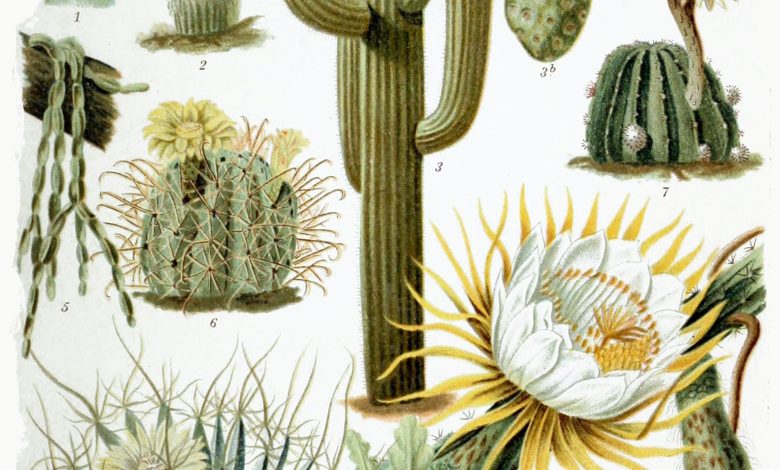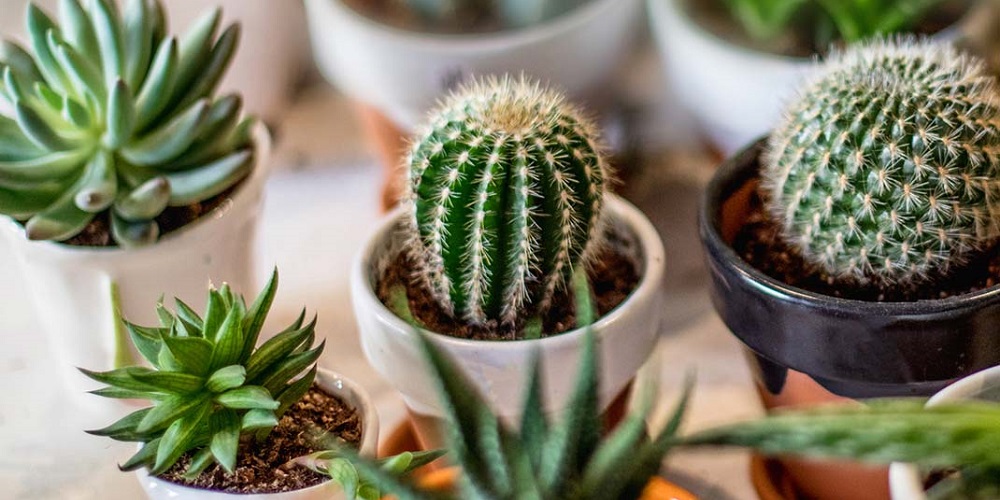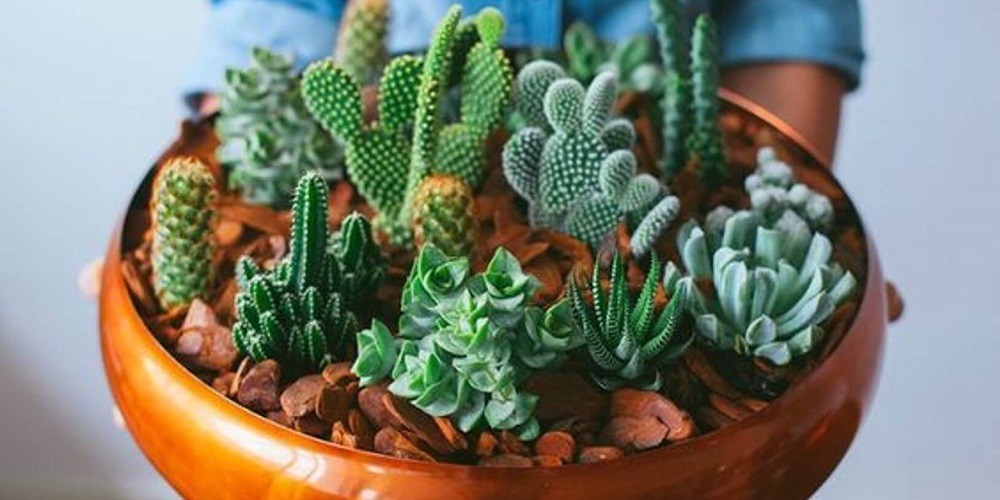Types of cacti and their cultivation

It is increasingly common to find cacti in homes and offices, since they are not only ornamental plants, but also provide other benefits to the environment. However, not all are the same, so it is convenient to thoroughly analyze the types of cacti and their care to know how to grow them correctly.
It is possible to find very diverse types among succulents, but cacti are one of the most popular. It is from the Cactaceae family, native to the American continent, especially from the most arid regions of Chile, Peru, Brazil and other regions of South America. Although many succulent plants are similar to each other, cacti are not directly related to other families.
If you have been given one, you may be wondering, what cactus do I have? For this reason, we have selected some so that you know their origin, the most important characteristics and a few tricks to grow them correctly.
1. Rebutia
This is one of the most interesting small cacti. It is notable for the cylindrical or spherical shape of the stem, which is usually abundantly covered in tuberculate ribs with short spines . In addition, it has daytime flowers that grow directly from an areola of thorns, these sprout during the summer and can have different shades, such as white, yellow, orange and red. Thanks to its different kinds of flowers, rebutia is a showy plant that is used for interior decoration.
Although this cactus has its origin in certain arid regions of Bolivia and Argentina, it is good to know that it is among the types of succulents that are better adapted to different atmospheric conditions. Rebutia tolerates sunlight well , but it is best to avoid direct rays during the early afternoon hours. However, this plant does not resist frost well, so it must be taken care of especially in winter.

2. Epiphyllum
Also known as orchid cactus, the Epiphyllum has square stems 1-5 cm wide, but what is most striking are its large white flowers, which can be up to 16 cm in diameter and have numerous petals. It is one of the most elegant spineless cacti, in addition, there are different species, although some are very similar to each other.
This cactus is native to Mexico and various regions of Central America, but it is very easy to grow elsewhere. It is only necessary to avoid direct sun and place it near windows, since it prefers good light. However, it is important to mention that it does not resist temperatures close to 0 °C well.
3. Opuntia macrocentra
Opuntia macrocentra is a succulent plant that takes up a certain amount of space, as it can measure up to 90 cm in height, which is why it is usually grown in large pots. It is a cactus with fleshy leaves in the form of elongated blades, usually purplish in color. Although some do not have spines, others incorporate areoles with pointed white formations on the upper part. As for the flowers, they are yellow with red and can have a maximum diameter of 7.5 cm.
Among the cacti species, this is one of the most resistant, as it withstands temperatures down to -10 °C, but it also has a good tolerance to heat . On the other hand, experts recommend watering between March and October, if the cultivation is done indoors.
4.Cereus
You may have ever seen pictures of Cereus cacti. It is a shrub with elongated, columnar stems and angular grooves, which can reach 10 m in height, making it one of the largest cacti.
In this sense, the Cereus cactus flowers are rounded and white and grow directly from the areoles that arise from the stems. Typically, the flowers can be up to 20 cm long and are funnel-shaped.
It is a fast-growing plant, but due to its size it is not always listed among the types of indoor cacti. However, it is easy to grow , as it bears high temperatures, even in full sun, although in winter it must be moved to a sheltered site, since it does not bear temperatures below 10 °C.

5. Gymnocalycium
Although fairly common in South America, especially Argentina, Uruguay, Bolivia, and Brazil, Gymnocalycium often appears on lists of rare cacti due to its exotic shape. In this case, it is no more than 15 cm in diameter. It has a solitary and spherical stem, but with colorful flowers of great beauty.
Among the dwarf plant classes, these are a collector’s favorite as they are relatively easy to grow. In this sense, they prefer direct sun, but they also survive in well-lit interiors. Although they tolerate low temperatures of -5 °C, as occurs with other cacti and succulents in general, the recommended range is from 10 to 30 °C.
6. Mammillaria
If you are a fan of botany, you may have seen photos of Mammillaria cacti. It is native to Mexico and has the particularity of being covered with very small tubercles with areoles that end in thorns, which allows it to reduce water loss for more effective storage. In addition, it includes colored flowers that form a circle at the top of the plant, like a crown.
This indoor cactus can withstand very adverse temperature conditions, since it is adapted to the heat of the desert during the day and also to the coldest nights, in this sense, it adapts quite well to changes. In summer, it can develop properly in a range from 15 to 24 °C, while in winter it can tolerate well from 10 to 13 °C. However, this is not a good option if you are looking for a cactus without spikes, because this one has too many.
As we can see, there are many varieties of cacti, but the most important thing is to identify which one we have at home in order to know its requirements and provide it with the best possible care. In addition, there are cactus-type plants that are not really, so they need other care.




